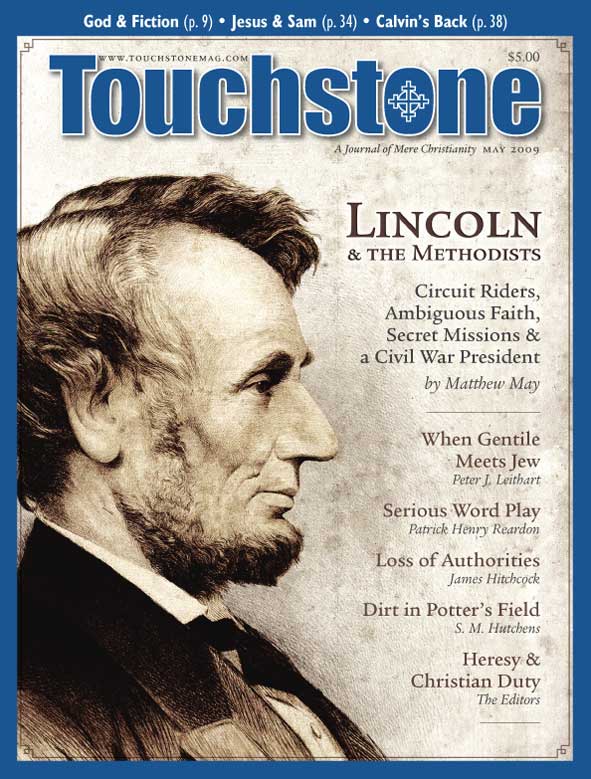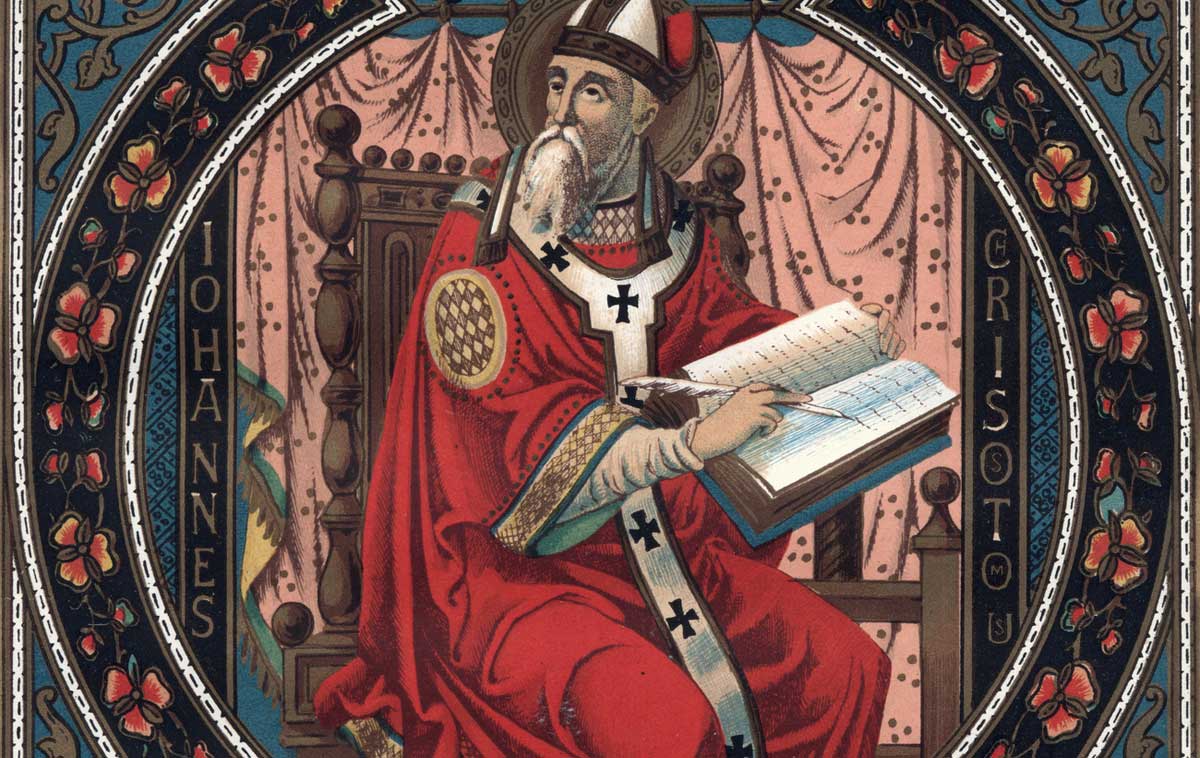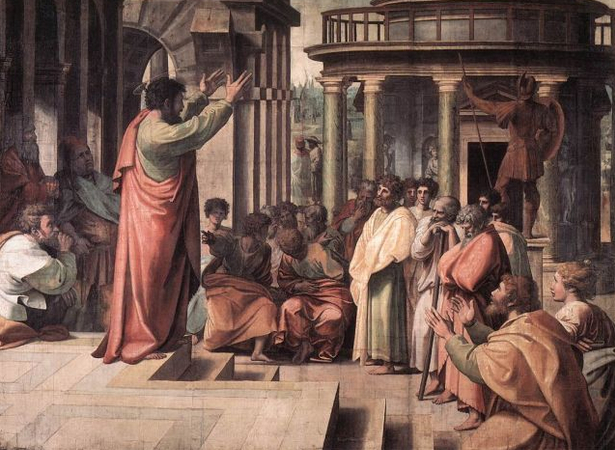View
Take & Give
Bruce Brander on Two Words That Describe the Workings of Love
Social researcher William Kephart once asked university students, “Do you feel that you know what love really is?” Seventy-five percent of males and 64 percent of females were uncertain.
Sociologist John Lee of the University of Toronto asked people from Britain, Canada, and the United States what love meant to them. Some said a frivolous game. Others described chaotic emotion, loss of appetite, and sleeplessness. Some talked of merging with another person or completing themselves. Others spoke of serene, sweet companionship. Some cited altruism as exemplified by great religions, with its patience, kindness, and seeking nothing in return.
Many say they mean to love but don’t know what love means: That’s a big reason for our present epidemic of broken hearts, broken marriages, broken families, and broken children.
Science & Eros
Psychologists Ellen Berscheid of the University of Minnesota and Elaine Hatfield of the University of Hawaii in 1973 argued that love is not one single thing. Rather, they identified two separate kinds of love: passionate and companionate.
Psychoanalyst Erich Fromm, in his classic book The Art of Loving, isolated three types of love: eros (romance), philia (devoted friendship), and agape (free giving).
Clyde and Susan Hendrick of Texas Tech University’s psychology department named six kinds of love: eros (romantic), ludus (game-playing), storge (companionate), pragma (practical), mania (roller-coaster emotionalism), and agape (altruism). They drew the names from classical Greek probably because the ancient Greeks had at least ten different words for love.
Robert J. Sternberg, a premier love researcher from Tufts University, named eight types of love. Psychologist Beverley Fehr of the University of Winnipeg outdid everyone; she listed twenty different kinds.
I propose that two words can make love clear and show us how to love successfully: need and gift.
Need-love has other names. The Greeks called it eros, after a winged god of love who shot arrows of life into a barren earth. Eros is our natural desire to fulfill ourselves by reaching outward to take something into our lives. Thus, I can love chocolate and London and ocean travel in the same way, because when I take them into my life, they fulfill me for a while. Likewise, I can fall in love with a woman and draw her into my life for personal fulfillment.
The woman brings to mind other names for need-love. Berscheid and Hatfield called it “passionate love.” Other professionals call it dependency, addictive love, or erotomania.
We sometimes label it “infatuation,” especially when we’re skeptical of someone else’s romantic fantasies or we’re dismissing a past relationship of our own. Puppy-love or a “crush” are words for the same emotional experience among the very young.
Most of us simply call it “romance.” Americans adore romance. Romantic emotions can strike one at any age, from 4 to 94 and beyond. The average American emotes through seven to ten romances in a lifetime.
Swept off our feet by romantic love, we idealize our Special Someone, endowing him or her with unearthly beauty, talent, and charm, seeing even flaws and defects as delightful. One psychologist calls this dazzled vision the “halo effect.”
Obsessive thoughts about our Special Person dominate our mind, often interfering with studies or work. We long to be with our loved one. Most of all, we want our beloved to love us in return; Mark Twain called this an irresistible desire to be irresistibly desired.
Advance of Romance
Romance is not an invention of Western culture, as some have claimed. Anthropologists William Jankowiak of the University of Nevada–Las Vegas and Edward Fischer of Tulane University in New Orleans studied 168 widely varying societies and found evidence of romantic love in at least 147 of them.
Yet many cultures disapprove of romance’s need-love. Ancient Egyptians deemed it a shameful weakness. Greeks called it “madness from the gods.” Present-day Bedouin peoples of North Africa and the Middle East regard it as disgraceful; their marriages are made by families.
Confucianism declared romantic love an unworthy sentiment linked to low moral standards and social disorder. Among traditional Australian aborigines, a girl who paired off to satisfy romantic desires was judged little different from a prostitute. In Korea until 1910, marriage based on romance was illegitimate and subject to severe punishment.
In much of European culture until about two centuries ago, people shunned romance as a basis for marriage. Wedlock was a family arrangement for economic or social advantage. Then, in the late eighteenth century, the Romantic movement in art and attitudes overthrew this tradition. The young were allowed freer choice of mates, while courtship gradually took on more sentimental tones.
For a long time, romance was generally sweet, upheld by ideals of candor, self-giving, and sexual control. That changed in the aftermath of World War I. The Lost Generation of the Jazz Age danced onto the scene as stylish pleasure-seekers. Erotic dress, literature, and motion pictures filled young minds with sensual ideas, ushering in the first modern sexual revolution in the 1920s.
The practice of “dating” was the biggest shift in courtship in centuries, with its casual and uncommitted intent. Parents were shocked to hear of a new practice known as “necking,” while the automobile made “sparking” and “pitching woo” readily accessible.
Hungry & Selfish
The 1960s brought a further sexual revolution, perhaps less a change in habits than an acceleration of behavior already underway, along with a rebellion against sexual hypocrisy. Around the same time, dating began to wane, replaced by hanging out, by vague, confusing, and unpredictable “relationships,” and by random sex, all lacking the protection provided by etiquette and rules.
The young have inherited a mode of love that leaves almost everyone disenchanted. Impaled on Cupid’s arrow, they make and unmake love with more despair than hope. Romance as it stands simply isn’t working. No serious endeavor in our society begins with such soaring hopes yet fails so often and so dismally. For all its zest and lyrical excitement, it leads more frequently than not to disillusion, disease, unhappiness, breakup, divorce, and other personal calamities.
The reason is more or less obvious. Romance as we do it is too laden with need. It’s hungry. And hunger produces few gifts.
Plato called Eros “the son of poverty.” Psychologist Roger Callahan observes: “Romantic love is selfish! When it comes to an authentic romantic relationship, it is your pleasure, and your happiness that’s the central base of emotion. . . . A selfless romantic love is absurd.”
Romance says, “I want, I need, therefore I love.” It’s concerned more with getting love than giving it, with consuming love than producing it. Yet when two people are trying to get, and neither is giving much, someone is sure to feel emotionally drained or injured after a time. According to psychologist Dorothy Tennov, the emotional highs of an average romance last between eighteen months and three years. After that, if the burning power of need-love has led to wedlock, the man and wife often wake up in shocked disillusion, married to a stranger, stranded on an emotional desert island. That’s probably why the fourth year of marriage is the commonest year for divorce.
Unconditional Love
Gift-love is the answer to most travails of romance. The earlier it’s added to need-love, the sooner it will stabilize a relationship. It also will raise the whole character of love and enrich the lovers.
Like need-love, gift-love also has other names. Ancient Greeks and the Christian Scriptures called it agape. We sometimes name it “altruism,” from the Italian word altrui, or “others.” Modern social scientists often speak of “unconditional love.”
Theologically, it is akin to God’s limitless love for his creation. On the human plane, gift-love is best exemplified by the love of an emotionally healthy mother for her baby, which she gives with no thought of what the baby can do for her in return.
Our society, which encourages mad consumption of both things and people, would have us believe that hot-blooded, sensual, gimme-gimme romance is the only worthwhile love, perhaps the only kind that exists. Yet nothing less than a healthy infusion of gift-love can build sound and lasting relationships.
Gift-love is the classic “true love,” in which the lover has no motive but the welfare of the beloved. In some ways it seems as different from need-love as day from night. Need-love is a condition we fall into, and enjoy passively. Gift-love is freely chosen, independent of any outside stimulus, motivation, or control. Gift-love changes “love” from a noun to a verb; it’s an intentional act of the will.
Need-love is desire, gift-love a decision. Need-love is a hope, gift-love an assurance. In need-love we feel, in gift-love we act. Need-love wants the other person; gift-love wants the other person’s well-being. In need-love we marry the person we love; in gift-love we also love the person we marry. The question moves from “Do I love her?” to “Will I love her?”
As need-love seeks self-fulfillment, gift-love seeks to fulfill the beloved’s needs. Gift-love is generous service offered solely to aid the highest welfare of another person, with no strings attached. As Martin Luther described it, “To love means to wish from the heart what is good for the other person, or to seek the other person’s advantage.”
Blending Loves
Psychologists tell us that most couples whose marriages endure add healthy doses of gift-love to their need-love. The blend creates justice, an interplay of rights and duties, and a more or less equal self-seeking and self-giving. As couples merge the two types of love, they transform their entire relationship.
I once wrote an article for National Geographic on tribal Bushmen people in Africa’s Kalahari Desert. My interest led me to learn about what a woman of the !Kung tribe named Nisa said about love. She described the graduation from need-love to blended love as well as anybody could: “When two people are first together, their hearts are on fire and their passion is very great. After a while, the fire cools and that’s how it stays. They continue to love each other, but it’s in a different way—warm and dependable.”
Some researchers name this new connection “friendship” or “affectional bonding.” This is the “companionate love” of Berscheid and Hatfield. Ancient Greeks named it philia, a stage between raw passion and saintly compassion. We might also think of it as devoted camaraderie. People who grow into this more generous loving come to know and accept each other far more than romancers ever do. As passion loves because, they love although.
They can relax in one another’s presence. They can be themselves and feel confident of being appreciated as they are. They cultivate a common core of tenderness, caring, understanding, trust, loyalty, and the ability to rise above petty annoyances. Their camaraderie is based on mutual respect rather than power or control. As need-lovers often strive to dominate, gift-lovers seek to cultivate. They are more outward-looking, no longer standing face to face engrossed in each other but side by side pursuing mutual interests and goals. They also make greater willing sacrifices. A need-lover will die dramatically with the beloved; a gift-lover will live and die sacrificially for the beloved.
Born for Love
Need-love and gift-love are not only types of love but also levels of love on a rising scale of quality and human benefit. Love is no static condition, but a dynamic exercise in growth toward emotional and spiritual health and maturity.
Need-love is born into us, the urgent drive of the helpless infant to get its desires met from outside itself. This basic level of love says, “I want, I need! And if you give me what I cry for, I’ll dote on you (but if you don’t, I’ll probably hate you and throw a tantrum).”
Gift-love is born in us only as potential. From our earliest years, we hold seeds of compassion, of giving and serving, of generosity and kindness, of honesty, fairness, and justice. But these seeds must be nurtured if they are to develop into strengths and virtues. “In love every man starts from the beginning,” Danish philosopher Søren Kierkegaard noted. Yet, for effective love, no one can stay at the beginning. As C. S. Lewis cautioned, “Mortal lovers must not try to remain at the first step, for lasting passion is the dream of a harlot and from it we wake in despair.”
To be sure, progress in gift-love is not accomplished in one giant leap. Rather, it comes a little at a time. Like building strong bodies and intelligent minds, productive love is slow and sometimes rigorous in its development. The process was described aptly by the seventeenth-century French churchman Francis de Sales: “You learn to speak by speaking, to study by studying, to run by running, to work by working; and just so you learn to love God and man by loving. Begin as a mere apprentice, and the very power of love will lead you on to become a master of the art.”
Gift-loving with honesty, kindness, patience, forbearance, and forgiveness leads us gradually from emotional infantilism toward maturity, from self-absorption toward liberation from the self’s demands, from spiritual poverty toward gracious inner wealth. As we willingly accept day by day the joys, inconveniences, and sacrifices of gift-love, our love grows, as once we promised, eternally. Then we come to understand that falling in love is easy, but rising to love is everything.‣
Bruce Brander is a sociological journalist and the author of seven books on travel and social issues. Formerly a staff journalist and editor for National Geographic and World Vision Christian relief and development agency, he now works from his home in Colorado Springs. His latest book is Love That Works: The Art and Science of Giving (Templeton Press). He regularly attends both Catholic and Evangelical churches with Mary, his wife of 24 years.
bulk subscriptions
Order Touchstone subscriptions in bulk and save $10 per sub! Each subscription includes 6 issues of Touchstone plus full online access to touchstonemag.com—including archives, videos, and pdf downloads of recent issues for only $29.95 each! Great for churches or study groups.
Transactions will be processed on a secure server.
more on marriage from the online archives
more from the online archives
calling all readers
Please Donate
"There are magazines worth reading but few worth saving . . . Touchstone is just such a magazine."
—Alice von Hildebrand
"Here we do not concede one square millimeter of territory to falsehood, folly, contemporary sentimentality, or fashion. We speak the truth, and let God be our judge. . . . Touchstone is the one committedly Christian conservative journal."
—Anthony Esolen, Touchstone senior editor














